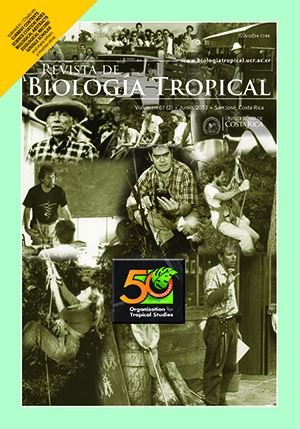Abstract
The Sierra Madre Oriental region in the mexican state of San Luis Potosí is a relevant place for bird conservation at a country level. Therefore the main goal of this study was to analyze the geographic patterns of distribution and the conservation current state of the birds, to support the needs to expand the conservation areas in the future. Data was collected from various databases of zoological museums and collections, and field sampling methods conducted from January 2009 to May 2011. Potential distributions were modeled for 284 species using GARP software and then a map was developed to determine areas with favorable environmental characteristics for the distribution of species richness. Finally, the importance of conservation areas for the potential distribution of birds in the region was evaluated. A total of 359 species were recorded of which 71.4% are permanent residents, 19% are winter migrants and 4% are summer residents. From this total, 41 species were endemic, 47 were species at risk and 149 were neotropical migrants. The largest species richness correspond to oak forests, cloud forests, and tropical moist forests located at altitudes from 100m to 1 500m. Their potential distribution was concentrated towards the center and Southeast of the study area. Only 10% of areas with a high potential conservation was included in areas of priority for bird conservation (AICA) and just 3% of all potential areas were under some governmental category of protection. However, no conservation area has a management plan currently applied and monitored. The information generated is important for the development of management proposals for birds conservation in the region.Comments
Downloads
Download data is not yet available.






